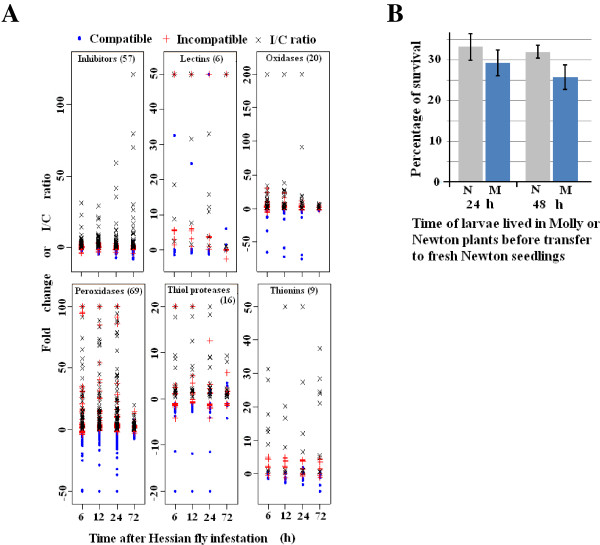Figure 4.
The majority of affected transcripts encoding proteins toxic to insects or enzymes that can produce toxic chemicals are up-regulated in resistant wheat plants. A: Transcripts encoding proteins for direct defense are up-regulated in resistant plants (red +), but down-regulated, not affected, or up-regulated to a less magnitude in susceptible plants (blue •) after Hessian fly infestation. The differential regulation of these transcripts between infested resistant and susceptible plants resulted in much higher expression levels, as measured by incompatible/compatible ratio (I/C ratio, indicated by the symbol x in the figure), in resistant plants. B: Toxic chemicals alone do not result in immediate lethality of Hessian fly larvae. Larvae fed in resistant plant for 24 and 48 h, respectively, were washed out from the plant after removing outside layers of leaf-sheaths. The larvae were then transferred onto new, susceptible seedlings individually. Two weeks after the transfer, the new susceptible plants were dissected to examine if the larva put on the plant was rescued (live). For control, larvae fed on susceptible Newton plants for 24 and 48 h, respectively, were washed out from dissected plants, and were then transferred to new Newton plants in exactly the same way. Statistical analysis indicated no significant difference (P = 0.2) between survival rates of Hessian fly larvae initially fed in Molly seedlings and those fed on Newton for either 24 or 48 hours.

